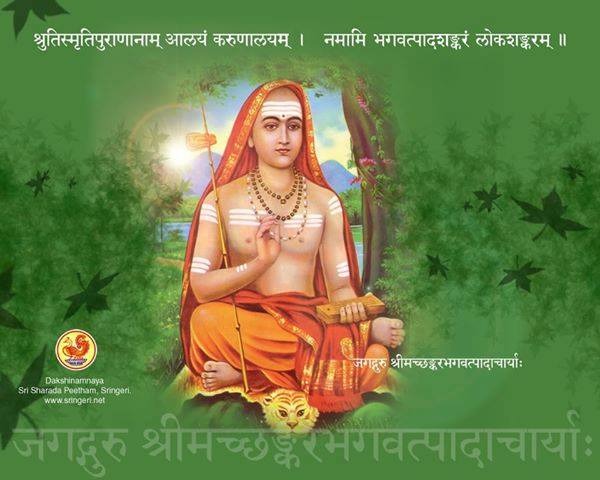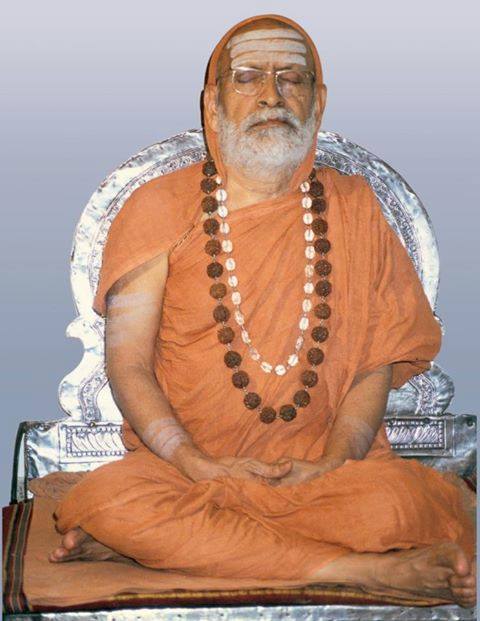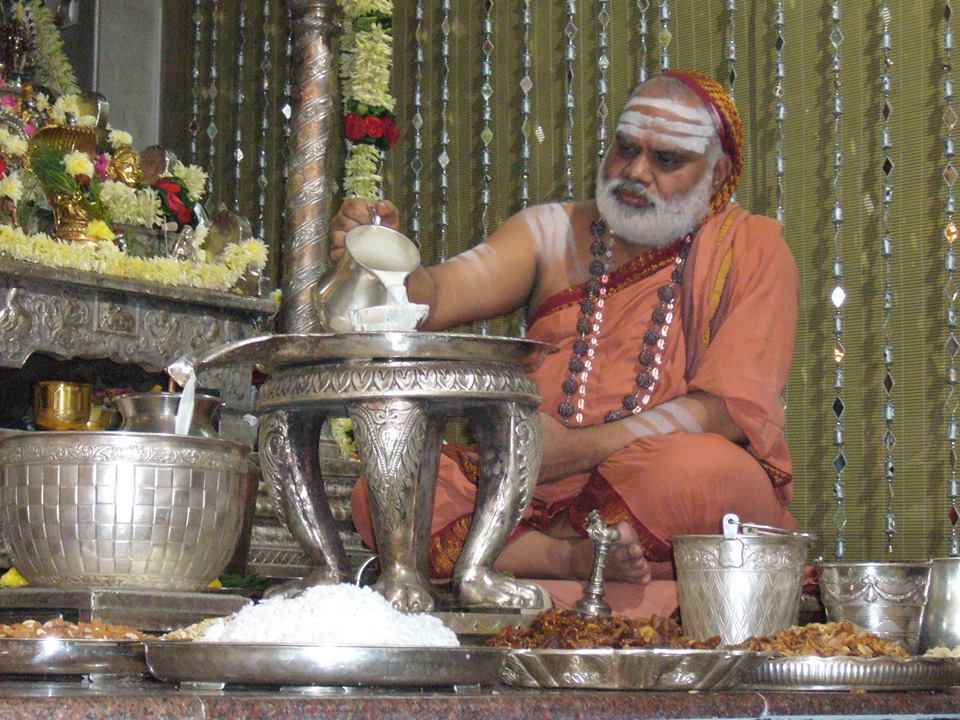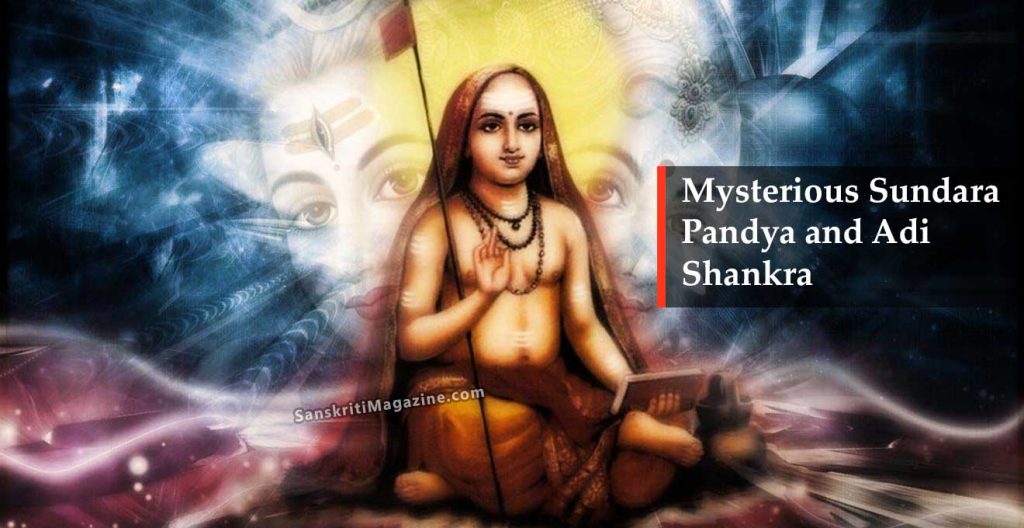Research Paper by London Swaminathan
Age of Adi Shankara is shrouded in mystery. Most of the scholars have already concluded that he lived in the eighth century CE (788-820). There is no positive proof to support this date. The confusion in dating happened because of another Shankara who was a copy of Adi Shankara in all aspects. Abhinava Shankara, whose name roughly translated sounds like “Once Again A New Shankara”.
There have been lot of discussions on this topic and a lot have been written. Kanchi Paramacharya (1894—1994) had given a long explanation for dating him in fifth century BCE. I am not going to repeat his argument or the counter argument of people attached to Sringeri Mutt, who believes that Shankara lived around 788 CE.
My argument is based on Sangam Tamil literature and Sundara Pandya. I have written about it in Tamil and posted it in this blog on 21st March 2012.
1. Adi Shankara’s favourite simile is rope mistaken for a snake. He used this allusion umpteen times in all his works. No one has used this like him. Greek Philosopher and founder of scepticism Pyrroh 360-270 BCE used this simile. Famous historian K A Neelakanta Sastri has commented on it saying that it was unusual for a Greek philosopher to use it. I think that he copied it from Adi Shankara. The reason for my conclusion is that he accompanied Alexander the Great. All of us knew Alexander’s unquenchable thirst for Hindu Philosophy. Swami Vivekananda, Paramahamsa Yogananda and many scholars have dealt with this subject.
More over this simile is used by Uuttiyaar, a Sangam Age poet. He used this simile in Akananuru (verse 68).: “A thunderbolt struck the Asoka Tree mistaking the swing rope for a snake”. Another poet Kutavaayir Keerathanaar used a similar comparison in verse Akam.119. This is to show that it is a typical Indian analogy.
2. One of the great four Saivite saints is Appar alias Tirunavukkarasu, who lived in the middle of seventh century. He used the famous slogan “Jaya Jaya Sankara” in his Tamil Thevaram hymn followed by the word ADI. Though this Adi has nothing to do with Shankara, I honestly believe that the thought of Adi Shankara made him to say “Jaya Jaya Shankara”. In one another hymn he says that “Stotras sung by your devotees” (of Shiva). The very word “Stotras (Thoththirangal)” in a pure Tamil hymn came through his mouth because he knew the contribution of Shankara very well. Appar lived during the reign of Mahendra Pallava.

3. Another common belief is that Shankara rejuvenated Hinduism by eliminating 72 conflicting sects and establishing Shanmatha (Six Forms of Worship). He fought against Jainism and Buddhism is another popular belief. If he had lived in eighth century there was need for it because both the religions had very little following at that time. In the South, Saivite Nayanmars and Vaishnavite Alwars have already re-established Shaivam and Vsihnavam.
4. Maya (illusion) was used by Shankara umpteen times in his hymns. Ancient Sangam poets went to the extent of using this Sanskrit word boldly in their verses due to the impact of Adi Shankara. They used the word in the context of impermanence (instability) of the world like Adi Shankara (363, 366 Purananuru). Strangely names of the poets are in Sanskrit Gothamanar (Gauthama) and Siruventheraiayar (Manduka Rishi).
Sanskrit word Maya occurs in Puram 243, 363,366; Akam 226,256; Kali.2-3, 88-7, 90-1, 93-15, Narr.294; Pari. 3-70; Pathi.60-6.
Saivite saints Appar, Sambandhar, Manikkavasagar also mentioned Mayavatha. It may be due to Shankara’s propaganda.
History’s Mystery — Sundara Pandya
5. Last but not the least is Sundara Pandya, who was a great Sanskrit scholar who wrote about Advaita even before Adi Shankara. This is the strongest proof to show that Shankara lived long before the accepted date of 788 CE. The name sounds like a king of the Pandyan Kingdom. All the Sundara Pandyas known to history lived in 12th century CE of after. They had no connection to Shankara. The other Sundara Pandya was the husband of presiding deity of Madurai , Goddess Meenakshi. This queen was referred to by the Greek Ambassador Megasthenes as ‘Pandya queen’. Shankara’s Brahma Sutra commentary used Sundara Pandya’s verses.
PT Srinivasa Iyengar in his History of the Tamils gives the following information quoting various authorities:
- Sundara Pandya was the person whose ‘varttika’ was quoted by Sankaracharya in his commentaries on Vedanta Sutra.
- A book on ethics, called ‘Niti dvi sastika’, attributed to Sundaya pandya was discovered and printed.
- As quotations from it occur in the Panchatantra and Janasrayi, it appears Acharya Sundara Pandya must have lived before sixth century.
- Sundara Pandya being a well known name of several kings, there is a temptation to identify this Acharya with a king of Madurai. I cannot think of any Pandya king capable of writing such works. I think Sundara Pandya merely means Sundara of Pandya country.

PTS Iyengar is wrong in assuming that Pandya kings were not capable of writing Sanskrit works. Mukundamala was written by a Chera king/Alvar in Sanskrit. A North Indian King by name Bramadutt learnt Tamil from Sangam poet Kapila and wrote verses in Tamil 2000 years ago! Because it was a rare achievement we still talk about them. Mudukudumi Peruvazuthi, the mighty Pandya King, installed Yupa Pillars through his kingdom. He was a performer of great Yajnas including Asvamedha. Iyengar was ignorant of Pandya Copper Plates.
Prof. S Kuppuswami sastri identified Sundara Pandya with Kun Pandya (Nedumaran) of Sambandhar period. Three of his verses were cited by Shankara in his Brahmasutra Bhasya (Page 219 of Sanskrit -Tamil Contact)
Sri Abhinava Vidya Theetha Swami of Sringeri Mutt
Dalawaipuram Copper Plates and Sinnamanur Copper plates of Pandya Kings praised Sundara Pandya as a great scholar. The wordings of the inscriptions give the impression that he lived long before the known kings. There is no mention of Sundara Pandya in the Sangam literature. But the inscriptions make it very clear that he was a king in the Pandya line. Sinnamanur plates say
“Imaam Kanchana Peedasyaam samethya kavayo Bhuvi
Aryaam Sundara Paandyasya snaapayanthivathimiva”,
Inanother Pandy copper plate
“Samastha Sastra Arnava Karnadharo yadudbhava Sundara Pandya nama”
Then the Rajasuya and Asvamedha Yagas performed by the Pandya kings were mentioned. So Sundara pandya must have lived in the first few centuries of BCE or CE. We know for sure the Sangam Age Pandyas and Chozas performing Asvamedha and Rajasuya Yajnas. From 570 CE, we have very clear record of Pandya kings and their activities. We don’t hear any big Yagas performed by them.
6.Shankara’s life is linked with Hala, Manukula Aditya, Purna Varman, Indra Varman (of Cambodia) in one way or other. If it is just one name one can reject it. Here the names mentioned were too many and those people lived long before the accepted date of Shankara 788 CE. Hala lived in first century AD in Andhra and another Hala in 4th century BCE. Manu kula Aditya was Manu Neethi Choza who lived around first century BCE. Even the age of Kumarila Bhatta connected with Shankara is debatable. Shankara’s fame would not have spread to far off Cambodia in such a short time if we are going to believe Adi Shankara’s disciple was Sivasoman (of Cambodia).But Abhinava Shankara can be the Guru of Sivasoman.
Sri Kanchi Paramacharya of Kanchi Mutt.
UNKNOWN DRAVIDACHARYA
7. Dravidacharya of first century BCE was a great Advaita scholar. Shankara quoted him and praised him as ‘Agamavidh’, ‘Sampradhaya Vidh’ in his commentaries on Mandukya Upanishad and Brihad Aranyaka Upanishad. This shows that Tamil Nadu of first century BCE produced great Sanskrit scholars. Shankara quoted a story from Dravidacharya’s work:
A prince lost his way in the forest when he was a child. The hunters found him and raised him like a hunter. Several years after this incident the minister of the kingdom went for hunting and found this prince through his special body marks (moles etc). The minister told him “Na Tvam Vyadha, Amushya Rajna Putra” (You are not a hunter, you are a king’s son) and handed over him to the king. He became a king soon. Like this the soul realises it’s true form –Brahma Swarupa— then it enjoys bliss.

(The same story is presented differently in Vedic literature: A lion cub is raised like a sheep. When other lions attacked the flock of sheep, this cub was identified and taught to roar like a lion. Then it got its true form)
Ananda giri also quoted Dravidacharya in his work.
8. Another conflicting information is the number of Shankaracharyas in each of his five Mutts : Dwaraka Peeth 80, Kanchi 70,Puri over 140,Kudali 60, Sringeri 36. Why is it?
Shankara’s Guru was Gowdapatha and his book was translated in to Chinese in sixth century CE!
9. Later Saiva Siddhanta scriptures mention the five activities/tasks of Lord Shiva– creation, preservation, destruction, veiling and grace. But Adi Shankara and Tamil epic Silappadikaram mention only the first three. We may use this for drawing a boundary line in dating.
Current Shankaracharya of Sri Sringeri Mutt
10. Dravidasisu reference: The reference to Dravida Sisu in Sowndarya Lahari of Shankara is not Tamil saint Sambandhar, but Shankara himself. Another possibility is that Abinava Shankara might have referred to Adi Shankara if we consider it as the work of Abhinava sankara. But in olden days the poets used to refer to themselves in their verses (Example: Manikkavasagar, Sambandhar)
11. There is a way to settle the controversy about the Age of Shankara or Kalidasa or Tamil saint Manikkavasagar. If we feed their works in to computers and analyse the word index, we may be able to decide their age through linguistics.










